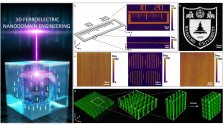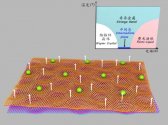Quantum Interference between Nonidentical Single Particles
Abstract
Quantum interference between identical single particles reveals the intrinsic quantum statistic nature of particles, which could not be interpreted through classical physics. Here, we demonstrate quantum interference between nonidentical bosons using a generalized beam splitter based on a quantum memory. The Hong-Ou-Mandel type interference between single photons and single magnons with high visibility is demonstrated, and the crossover from the bosonic to fermionic quantum statistics is observed by tuning the beam splitter to be non-Hermitian. Moreover, multiparticle interference that simulates the behavior of three fermions by three input photons is realized. Our work extends the understanding of the quantum interference effects and demonstrates a versatile experimental platform for studying and engineering quantum statistics of particles.本报讯(记者朱汉斌)华南师范大学物理与电信工程学、物理前沿科学研究院、粤港量子物质联合实验室的冷原子研究团队在量子科技方面取得新研究进展,首次实验实现了不同粒子之间的量子干涉。该成果日前发表于《物理评论快报》。
相同粒子之间的量子干涉可以揭示粒子固有的量子统计特性,这在经典物理学范畴内无法得到合理解释,从而引起物理学家们的研究兴趣。分束器是实现量子干涉的核心元件,全同粒子输入分束器后,在输出端口可形成量子纠缠态,该量子纠缠态便是全同粒子干涉后的结果。同类型的玻色子,如光子与光子、磁子与磁子、等离激元与等离激元之间的量子干涉早已得到了广泛和深入的研究。然而到目前为止,尚未有研究组对不同类型的玻色子之间的量子干涉行为进行过研究。
在该项研究中,研究人员利用量子存储器在实验上实现了非厄密分束器,演示了不同类型玻色子之间的量子干涉。该实验首先通过调节量子存储过程中控制光失谐与拉比频率,实现了分束器从厄密到非厄密特性的连续切换,然后通过调节分束器的非厄密性质,观测到了单磁子与单光子干涉从玻色子到费米子量子统计的转变。最后,通过连续输入3个单光子进入非厄密分束器实现了三光子干涉。该工作扩展了人们对量子干涉效应的理解,展示了一个可用于研究粒子量子统计行为的多功能实验平台。
审稿人指出,这项有意义的成果有望应用于量子干涉相关的量子技术中,包括量子通信、量子测量与传感及量子计算等。



